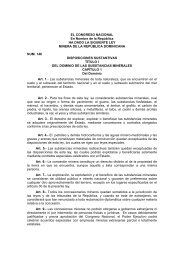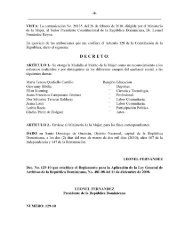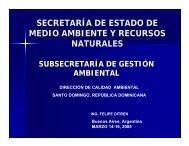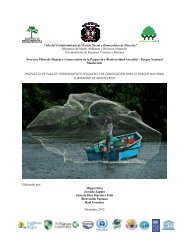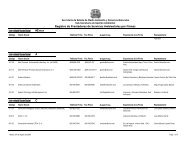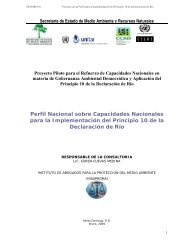CAMBIO CLIMATICO
CAMBIO CLIMATICO
CAMBIO CLIMATICO
Create successful ePaper yourself
Turn your PDF publications into a flip-book with our unique Google optimized e-Paper software.
PRIMERA COMUNICACIÓN NACIONAL<br />
Aggregate emissions in equivalents of CO 2 of the principal direct greenhouse effect<br />
gases (from gross emissions). Dominican Republic, 1990 and 1994.<br />
Gas<br />
Gas Emisión Emission<br />
(Gg CO -e) (Gg CO-e) Relative contribution (%)<br />
1990 2 1994 2 1990<br />
1) Emissions and absorptions resulting from land-use change and forestry were not considered. AE – aggregate emissions.<br />
Relative contribution (%)<br />
1994<br />
CO 2 8 716.66 15 003.05 69.2 73.4<br />
CH 4 3 039.54 4 659.9 24.1 22.8<br />
N 2 O 840.1 778.1 6.7 3.8<br />
EA 12 596.21 20 441.05 100 100<br />
reflect their contribution to possible future warming,<br />
the Global Warming Potentials (GWPs) are<br />
used; in other words, the emissions of methane<br />
(CH 4 ) and nitrous oxide (N2O) that have, respectively,<br />
a potential for atmospheric warming 21<br />
times and 310 times greater that those of CO 2 .<br />
As noted in the table, between 1990 and 1994,<br />
CO 2 increased its relative contribution to warming,<br />
while the contribution of methane was<br />
reduced slightly and that of N2O was reduced by<br />
almost half.<br />
1.3.5 Emissions Per Capita<br />
The following table shows the results obtained<br />
from calculating emissions per capita for 1990<br />
and 1994, or from gross and net emissions. As<br />
noted, the results obtained differ markedly for<br />
each analysis conducted.<br />
As noted, in 1990 each inhabitant of the country, on<br />
average, emitted 1.23 t CO 2 /year if emissions and<br />
absorptions from land-use change and forestry are<br />
not considered. If these are included, the emission<br />
per capita is reduced notably, something that is a<br />
result of the fact that in this module, in net form,<br />
removals, not emissions, of CO 2 are produced. A<br />
similar situation occurs in 1994. The increase in the<br />
values of the emission per capita of CO 2 between<br />
1990 and 1994 should be noted, although these<br />
values are among the typical values of the countries<br />
that do not make a significant contribution to the<br />
emissions of this greenhouse effect gas.<br />
1.4 VULNERABILITY AND<br />
ADAPTATION TO CLIMATE<br />
CHANGE<br />
At the national level and in compliance with the<br />
program of the UN Framework Convention on<br />
Climate Change, and as a measure for addressing<br />
the worldwide increases in greenhouse effect<br />
gases and the adverse effects of climate change,<br />
the Dominican Republic conducted a study of<br />
Vulnerability and Adaptation to Climate Change<br />
in the areas of water resources, coastal zones,<br />
agriculture, forestry, and health.<br />
Emissions per capita of carbon dioxide (CO 2 ), carbon (C) and carbon dioxide<br />
equivalents (CO 2 -e). Dominican Republic, 1990 and 1994.<br />
1990 1994<br />
t CO 2 /person t CO 2-e/person t CO 2/person t CO 2-e/person<br />
Excluding land- use change and forestry 2 1.23 1.77 1.95 2.66<br />
Including land-use change and forestry 3 0.819" -- 1.1 --<br />
43



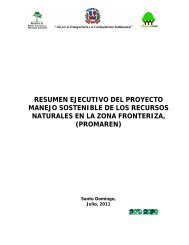
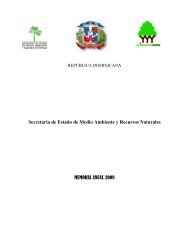

![Documento de trabajo del grupo G-77[1] EconomÃa verde en el ...](https://img.yumpu.com/50859069/1/190x245/documento-de-trabajo-del-grupo-g-771-economa-a-verde-en-el-.jpg?quality=85)




